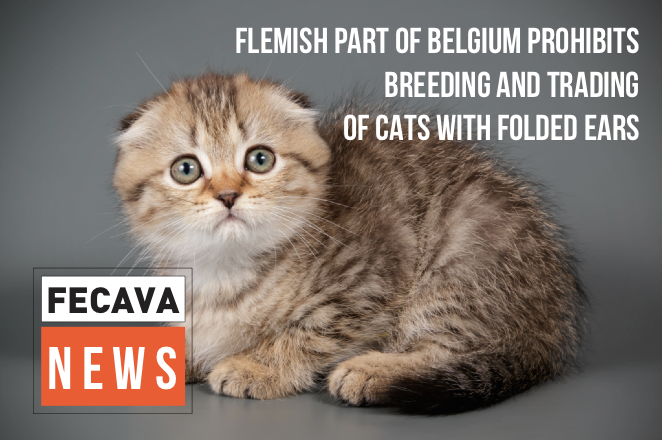
Flemish part of Belgium bans breeding and trading of cats with folded ears
Starting October 1, 2021, the breeding and trading of cat breeds with folded ears, such as Scottish fold and Highland fold cats has been prohibited in Flemish part of Belgium.
The most noticeable feature of these cats is its ears, which are the consequence of a genetic mutation that causes abnormality in the cartilage called osteochondrodysplasia. The cartilage elsewhere in the body, such as in the joints, is also malformed. These animals suffer from variable degrees of painful degenerative joint disease.
It is unethical to continue to breed cats with the genetic mutation known to cause significant painful disease.
More about the Scottish Fold disease – osteochondrodysplasia on the iCatCare webpage.
More at the source.
Leave a reply

I have had a Scottish fold nearly my whole life. 3 to be exact. The first two were almost 17 when they passed. Never any health issues. I have a 2 year old now and he’s perfect. I got my first one in 1985. If you use a reputable breeder that knows how to breed them it’s one thing. Now they have all these “designer breed” dogs and cats that have many health issues because of the breeding. I am in vet med so I have been around a lot of different breeds. This is ridiculous and not fair to the poor kitties that end up with deformations and life painful lives. Not all Scottish Folds have issues.
ReplyThank you Terri for setting them straight.
ReplyGlad to hear that, my first cat was a moggy who carried the FD gene and she was overall healthy (she lived almost 20 year).
ReplyIn future I want actual Scottish Fold, so I’m doiung researches in order to have healthy cats.
Check your facts. I’ve had American Curls. Like Terri Jayne said, REPUTABLE breeders. Not backyard breeders who just breed all in the name of greed. The cats are the ones who suffer.
ReplyStop backyard breesing
ReplyI’ve had a moggy who happened to be born with the fold gene. She lived 19 years. Looking at her full morphology she was half SF. Her mum was a feral long hair house cat, I think she happen to meet a unneutered free roaming Scottish Fold.
ReplyWhen I adopted my cat, I didn’t even know what a fold was, and I had no idea where her small ears (single fold) came from .
I admit when I found she was a fold, I was allarmed. My cat developed artritis at the age of 11. I realized she was a fold when she was 19. At the age of 11 arthritis is a quite common disorder that most cat (folded or non folded) can develop, is an issue of the full specie and is part of aging process (my friend’s purebreed Siamese also got arthritis at the age of 11). I did the tail test to my cat, and her tail has always been flexible and pain free. Thpough similar, age related arthritis and OCD are two completely different diseases.
Now I have three straight eared moggies, but in future I want one or two Scottish Folds, so I did my researches about the breed. Those who have sick SF told they bought them from pet shop, or their cat were monozygous. There are also rare case of cats who carry the FD gene, but which ears straight up normally, and look perfectly like straight eared cat. without a DNA test those cat may be mistaken for Scottish Straight and be used in breeding programs, generating monozygous and sick kittens. I didn’t see an actual epidemy of OCD, on the contrary, many owner of not-so young SF tell their cats are fine, and when I see their videos, cats move normally, jump normally etc…
Also, I’ve read a list of common disease of purebreed cats and Scottish Folds are among the healtiest, thanks to outcrossing in order to avoid clinical OCD.